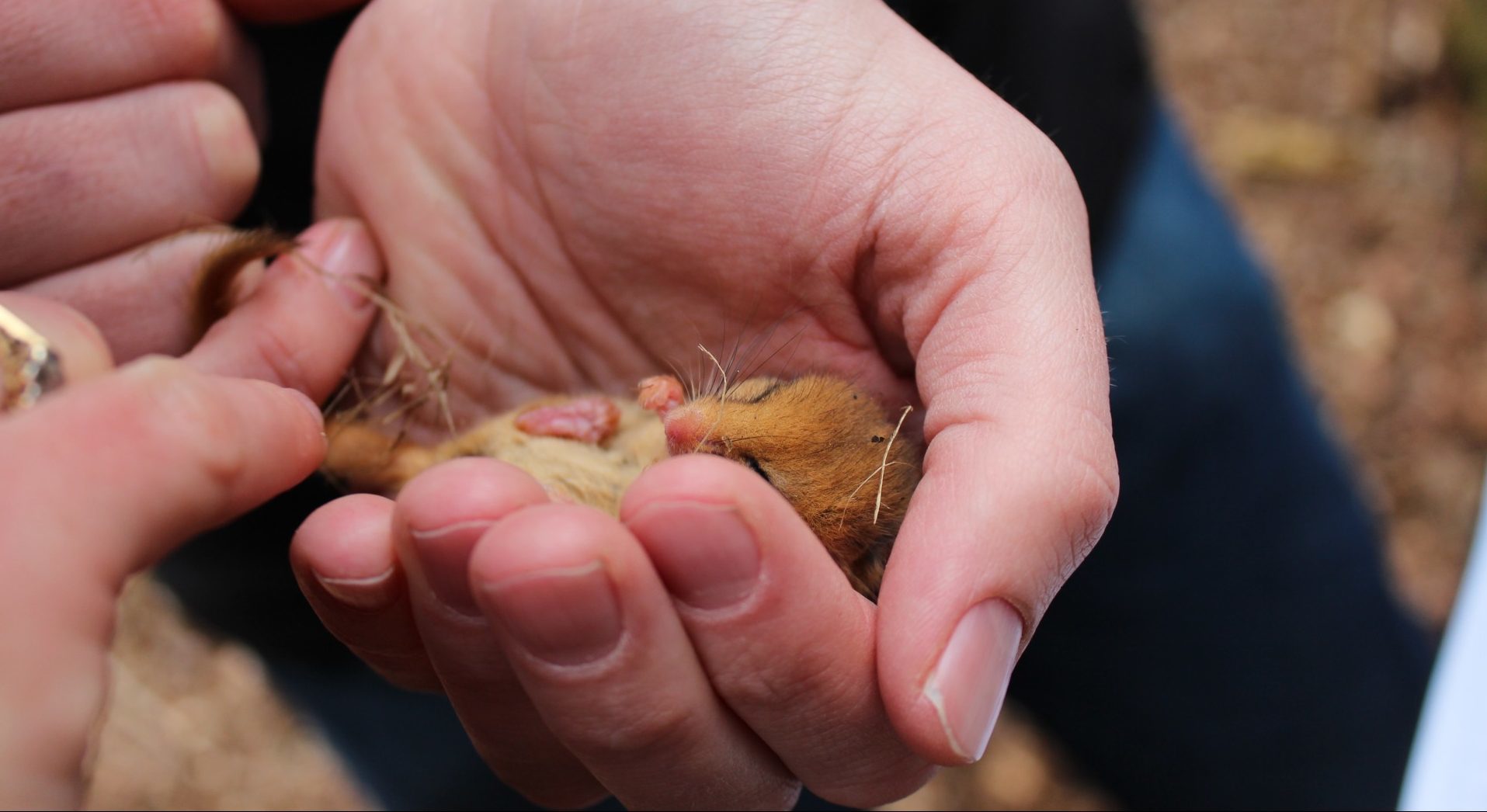The third weekend in November marked the last dormouse nestbox checks of the year for the National Dormouse Monitoring Programme (NDMP). As the nights drew in and the frosts appeared, dormice, along with many other animals, started to hibernate. The NDMP will begin again in March with a spring clean of the nesting boxes.
The NDMP was set up 25 years ago and involves surveying nest boxes at more than 350 sites across Britain. The boxes, which are similar to bird boxes, are set up in habitats such as coppiced hazel woodland and provide a safe refuge for dormice and other visitors such as wrens and blue tits. Dormice build nests inside the boxes, which allows us to detect these rare and elusive animals. Large numbers of boxes can even boost dormouse populations. There are usually around 50 boxes at each site, which are checked once a month by volunteers who then record the weight, sex and age of the dormice.
But why do we go to all this effort for dormice?
The dormouse (Muscardinus avellanarius), also known as the hazel dormouse, is our only native dormouse and one of the most endangered mammals in the UK. Dormice are absent in Scotland and Northern Ireland but are a Species of Principal Importance in England (NERC Act 2006) and listed under Section 7 of the Environment (Wales) Act 2016. They are also offered some protection under the Wildlife and Countryside Act (as amended) 1981. Furthermore, the dormouse is a European Protected Species. This legislation means that it is an offence to deliberately kill, injure or disturb the animals or interfere with their places of shelter. Additionally, a licence is required to carry out activities such as dormouse surveys.
Therefore, NDMP surveys are led by a licence holder. Thomson Ecology monitors 50 boxes each month for the NDMP at a site in Surrey. On Saturday 19th November Lloyd Richards, an assistant ecologist at Thomson Ecology who has recently obtained his licence, led the box checks. We found an active dormouse in one of the boxes and Lloyd was able to demonstrate how to check the box when a nest has been discovered and also how to correctly handle the dormouse. Occupants in other boxes included a pigmy shrew, old birds-nests and a feisty wood mouse!
When conducting dormice surveys for a development, nest tubes are often used. The photograph below shows three torpid dormice in a nest tube found on site by Lloyd earlier this year. Another way to look for dormice is to carry out gnawed nut searches because nuts opened by dormice differ from those opened by other mice, squirrels or voles.
Lloyd stressed that despite the efforts of the NDMP, “dormice continue to remain largely under-surveyed despite being vulnerable to extinction. The fact that dormice are threatened by habitat loss and inappropriate habitat management highlights that they are a species that should always be given due consideration.”











